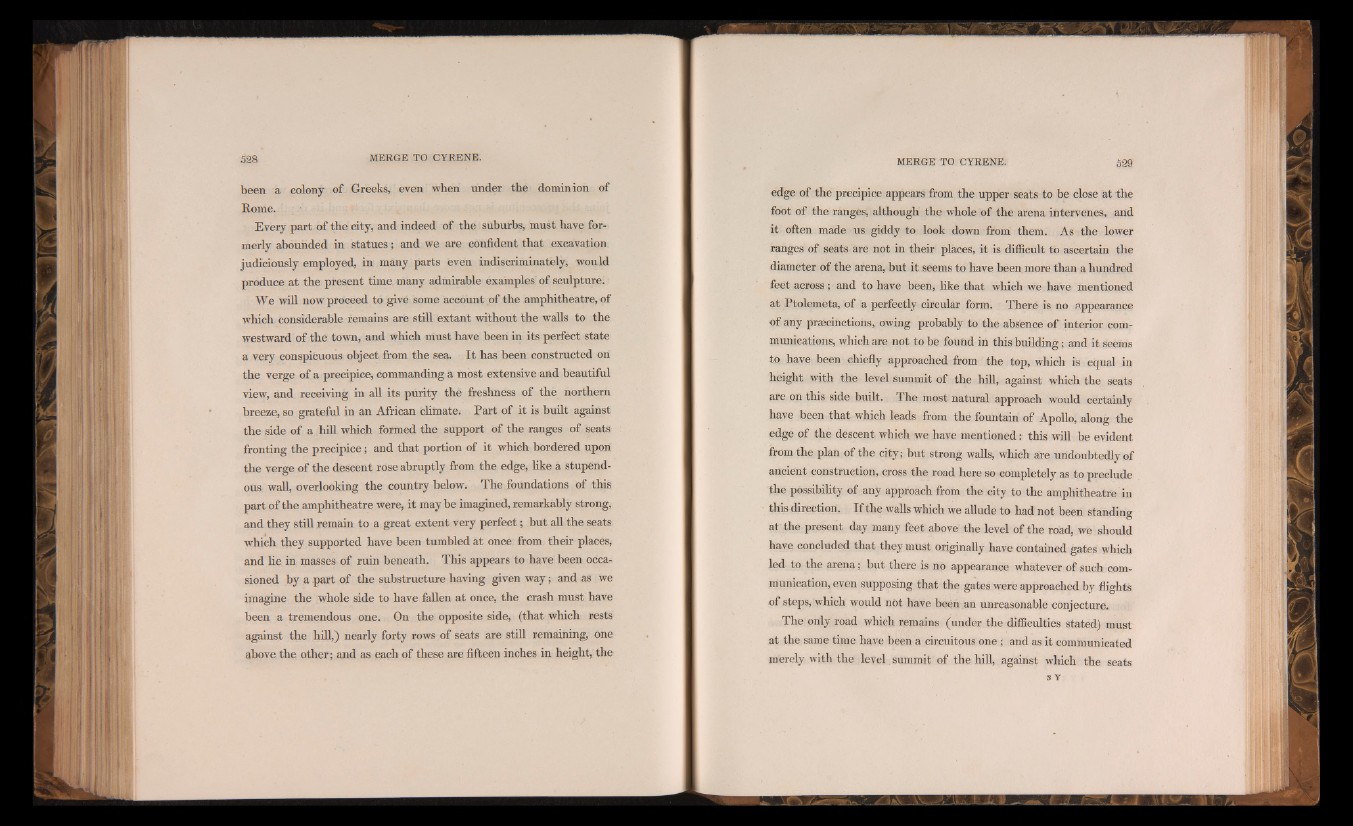
been a colony of Greeks, even when under the dominion of
Rome.
Every part of the city, and indeed of the suburbs, must have formerly
abounded in statues; and we are confident that excavation
judiciously employed, in many parts even indiscriminately, would
produce at the present time many admirable examples of sculpture.
We will now proceed to givé some account of the amphitheatre, of
which considerable remains are still extant without the walls to the
westward of the town, and which must have been in its perfect state
a very conspicuous object from the sea. I t has been constructed on
the verge of a precipice, commanding a most extensive and beautiful
view, and receiving in all its purity the freshness of the northern
breeze, so grateful in an African climate. Part of it is built against
the side of a hill which formed the support of the ranges of seats
fronting the precipice; and that portion of it which bordered upon
the verge of the descent rose abruptly from the edge, like a stupendous
wall, overlooking the country below. The foundations of this
part of the amphitheatre were, it may be imagined, remarkably strong,
and they still remain to a great extent very perfect; but all the seats
which they supported have been tumbled at once from their places,
and lie in masses of ruin beneath. This appears to have been occasioned
by a part of the substructure having given way; and as we
imagine the whole side to have fallen at once, the crash must have
been a tremendous one. On the opposite side, (that which rests
against the hill,) nearly forty rows of seats are still remaining, one
above the other; and as each of these are fifteen inches in height, the
edge of the precipice appears from the upper seats to be close at the
foot of the ranges, although the whole of the arena intervenes, and
it often made us giddy to look down from them. As the lower
ranges of seats are not in their places, it is difficult to ascertain the
diameter of the arena, but it seems to have been more than a hundred
feet across; and to have been, like that which we have mentioned
at Ptolemeta, of a perfectly circular form. There is no appearance
of any prascinctions, owing probably to the absence of interior communications,
which are not to be found in this building; and it Seems
to have been chiefly approached from the top, which is equal in
height with the level summit of the hill, against which the seats
are on this side built. The most natural approach would certainly
have been that which leads from the fountain of Apollo, along the
edge of the descent which we have mentioned: this will be evident
from the plan of the city; but strong walls, which are undoubtedly of
ancient construction, cross the road here so completely as to preclude
the possibility of any approach from the city to the amphitheatre in
this direction. If the walls which we allude to had not been standing
at the present day many feet above the level of the road, we should
have concluded that they must originally have contained gates which
led to the arena; but there is no appearance whatever of such communication,
even supposing that the gates were approached by flights
of steps, which would not have been an unreasonable conjecture.
The only road which remains (under the difficulties stated) must
at the same time have been a circuitous one ; and as it communicated
merely with the level , summit of the hill, against which the seats
3 Y